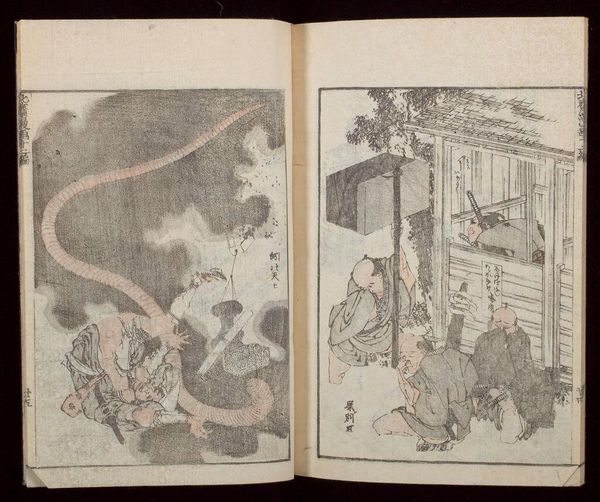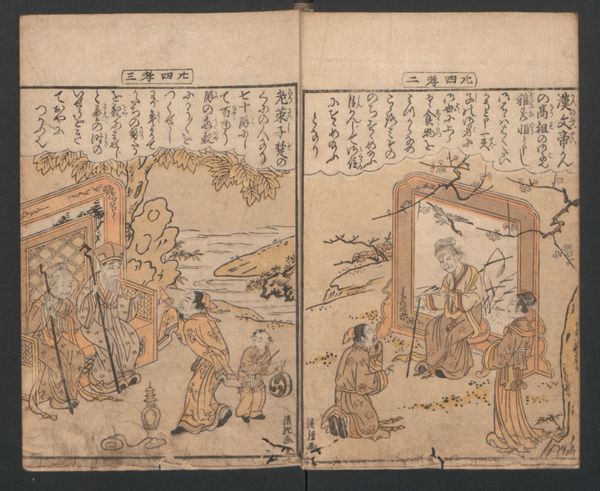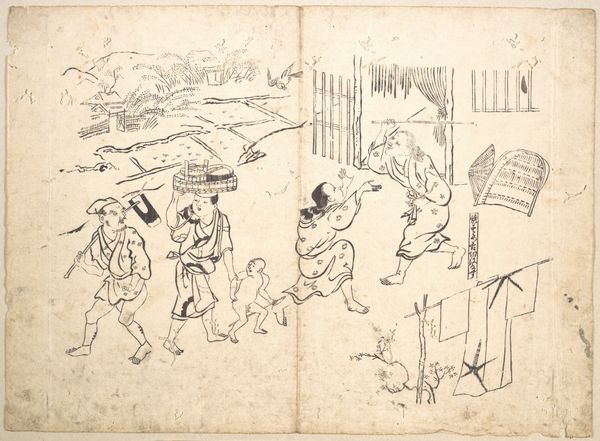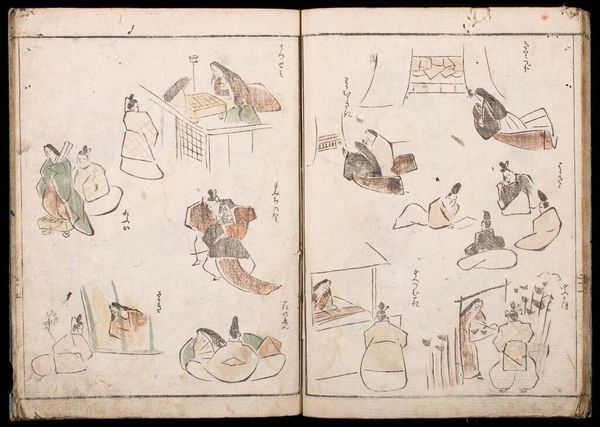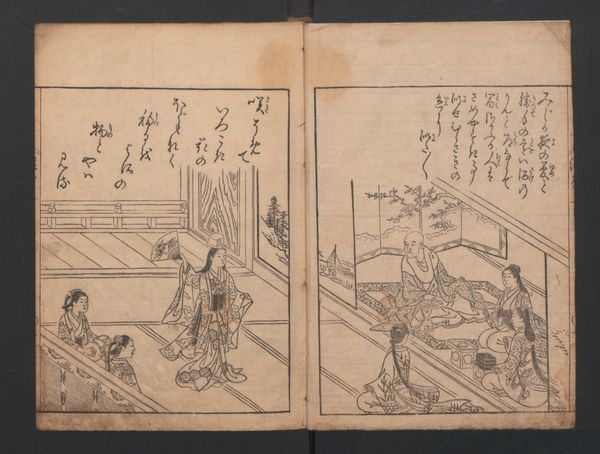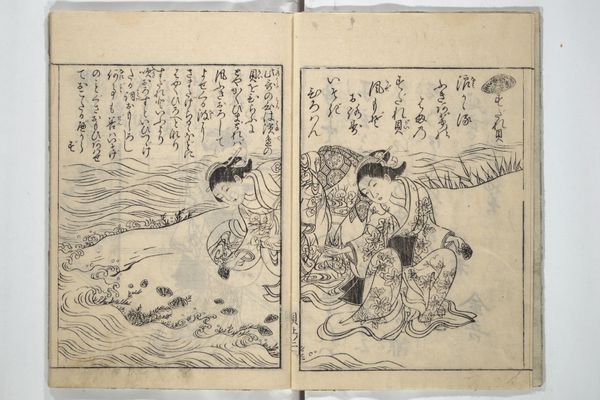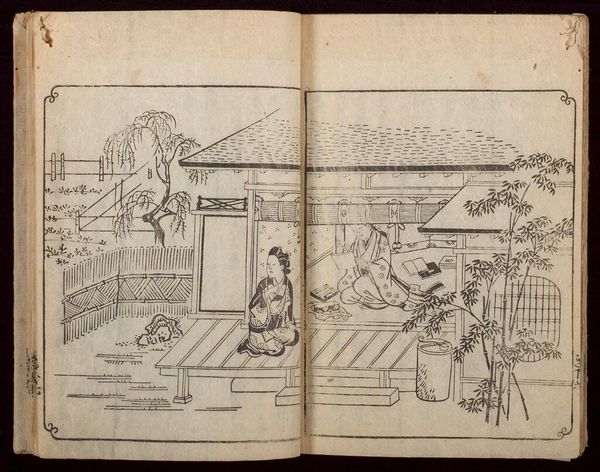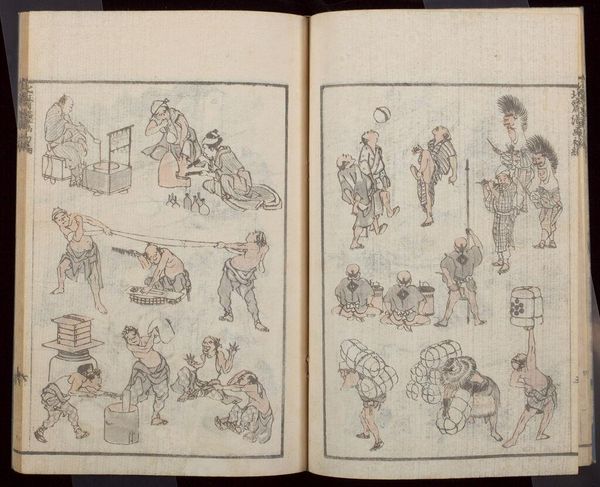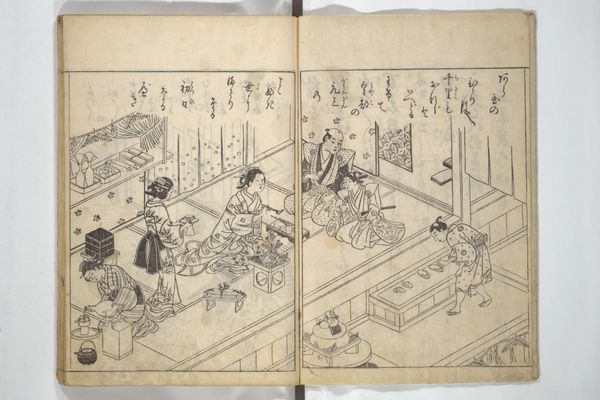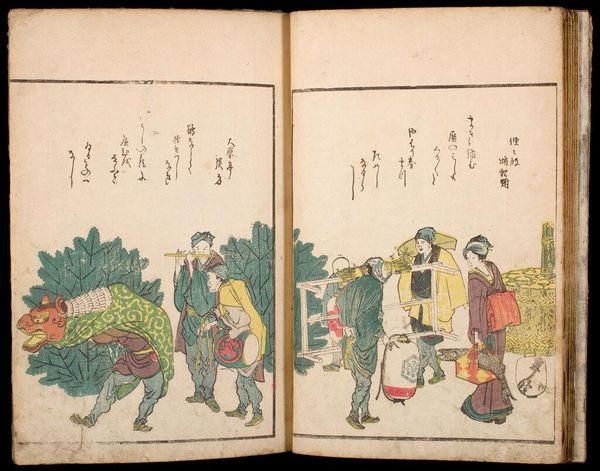
print, woodblock-print
# print
#
asian-art
#
landscape
#
ukiyo-e
#
figuration
#
woodblock-print
#
line
#
genre-painting
#
realism
Copyright: Public domain
Curator: Let’s turn our attention to "Manga", a woodblock print housed here at the Guimet Museum. This piece exemplifies Hokusai's command of line and form, a testament to the Ukiyo-e tradition. Editor: My first thought? Weariness. Look at those figures, hunched and toiling. There's a stoic, almost poetic, quality to their labor. Makes you wonder about the unseen narratives behind these faces. Curator: Indeed. Notice how Hokusai uses dynamic line work to depict the figures. Their postures suggest an almost choreographic arrangement. The realism with which the figures are represented lends credence to its genre-painting roots, effectively capturing the day-to-day activities of common people. Editor: The repetition, though – it strikes me as both monotonous and meditative. Is that the point, perhaps? The cyclical nature of labor, etched into the very composition itself? There is an innate sense of grounding here as well as visual realism and detail. Curator: Structurally, the print achieves a delicate balance. The negative space interacts harmoniously with the populated areas, preventing the scenes from feeling overly dense. Consider, too, the visual semiotics at play in the work: how each element contributes to our understanding of work, perseverance, community. Editor: It almost feels like a documentary of the soul—revealing the gritty textures of existence without romanticism or embellishment. Despite all the detail that has been rendered here it's as if the bare bones of laboring life have been revealed. What if each scratch represents a memory or the passing of another minute? Curator: Hokusai presents us with an unvarnished look at labor. We have a scene where one may even say a sugar press appears as we view it from a modern vantage point. It's this kind of close observation married with impeccable artistic execution that elevates "Manga" beyond simple genre scenes into a broader exploration of the human condition. Editor: Looking at it now, I see not just weariness but a strange kind of beauty. A tribute to quiet dignity and the silent stories etched into working hands. I'm seeing this scene now in a more celebratory light, and it is that interplay of impressions that makes it even more sublime.
Comments
No comments
Be the first to comment and join the conversation on the ultimate creative platform.
